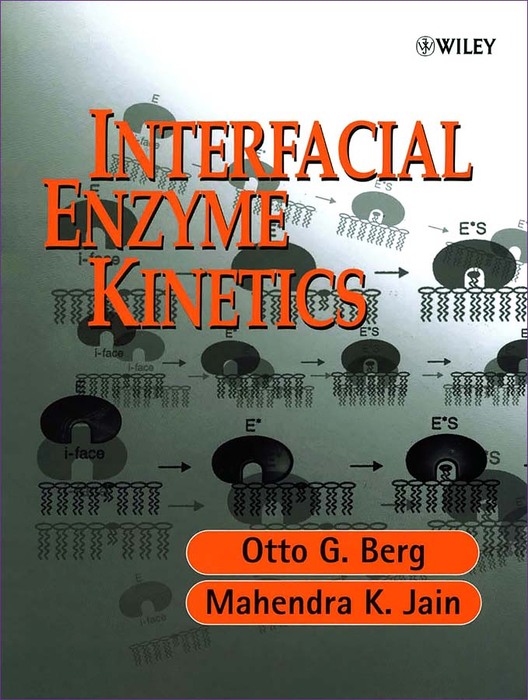內容簡介
A vast number of biochemical reactions are catalysed by molecules fixed to the surface of membranes (or other biological structures) with molecules in the surrounding solution. The study of the mechanisms at these "Biointerfaces" are becoming increasingly important for the understanding of biological catalysts, such as enzymes. This project is the first book to deal with the physical and chemical principles of an emerging field of science, for which the authors have set the ground-work.
• The first book to deal with this newly emerging area.
• Concentrates on the chemical and physical foundation of enzyme catalysis
• Key area for the deeper understanding of biocatalytic processes
• Examples for proteins and nucleic acids, two central areas of biochemical and bioorganic research
作者簡介
Otto G. Berg and Mahendra Kumar Jain are the authors of Interfacial Enzyme Kinetics, published by Wiley.
目次
Preface.
Theory Boxes.
List of Symbols.
1. Why Interfacial Enzymes?
Structral Diversity of Nonpolar and Amphiphilic Solutes.
To Be or Not to Be in Water.
The Hydrophobic Effect.
Knotty Issues of Interfacial Enzymology.
Pathophysiology of Lipolytic Enzymes.
Secreted PLA2 (sPLA2) Prototype for Interfacial Enzymology.
Summary and Outlook: Towards the Paradign for Interfacial Enzymology.
2. Interface Phenomena: Accessibility and Exchange.
Aggregates and Dispersions.
Organized Micellar Aggregates in Aqueous Dispersions.
Amphiphile Organization and the Monomer - Micelle Equilibrium and Exchange.
The Concentration Issues in the Monomer - Aggregate Equilibria.
Exchange of Amphiphiles between Organized Interfaces.
Dispersed Phases.
Choice of Interface for Study of an Interfacial Enzyme.
Summary: Interface Determines the Accessibility and Replenishment Rate.
3. To Be or Not To Be: Dilemma for the Substrate in Solution.
Constrained Reaction Path for the Turnover in the Aqueous Phase.
Analysis of the Steady State Turnover Cycle in the Aqueous Phase.
Ascertaining the Reaction Path in the Aqueous Phase.
PAF-Acetylhydrolase Hydrolyzes the Monodisperse Substrate.
Equilibrium Partitioning and Binding to Aggregates.
Summary: The Equilibrium Dilemma.
4. Interfacial Processivity: Ensemble Behavior in the Scooting Mode.
Conceptualizing Interfacial Processivity.
The Fourfold Meaning of the Substrate Concentration.
Constraints for Defining the Variables for the Reaction Progress in the Scooting Mode.
Integrity of Vesicles during the Scooting Mode Reaction Progress.
Tests for the Scooting Mode reaction progress by PLA2.
Ensemble Behavior of the Binding of the Enzyme to Vesicles.
Summary: Ensemble Behavior in a Microscopically Heterogeneous Environment.
5. Analysis of the Processive Reaction Progress.
Michaelis - Menten Equation for the Turnover in the Interface.
Catalytic Parameters from the Integrated Processive Reaction Progress.
Additional Constraints for the Analysis of the Interfacial Turnover Events for PLA2.
Uses of the Primary Catalytic Parameters.
Catalytic Mechanism of PLA2.
The Quality-of-Interface Effect.
Apparent Interfacial Activation.
Hopping and the Fast Enzyme Exchange Limit.
Summary: Variations in the Processivity.
6. Detailed Balance Conditions for Interfacial Equilibria.
Binding of Ions to the Interface.
Equilibria for the Binding of the Enzyme to the Interface.
Effective Equilibrium Constants.
The Cofactor Binding Obligatory for the Substrate Binding.
Detailed Balance Conditions and Local Concentrations for Effective Ligand Binding.
Resolution of the Interfacial Constants for PLA2.
Detailed Balance Conditions for PLA2.
Summary: Primary Equilibrium Parameters for the Kinetic Path.
7. Rapid Substrate Replenishment in the Quasi-Scooting Mode.
Interfacial Catalytic Cycle Turnover in the Quasi-Scooting Mode.
Sparingly Soluble Substrates.
Reaction Rate with the Partitioned Substrate.
Interfacial Turnover by Triglyceride Lipase.
Lid on tl-Lipase Active Site.
Interfacial Allostery for the Quality-of-Interface effects.
Motifs for Close Contact of Proteins with the Interface.
Summary: Multiple States of the Enzyme at the Interface.
8. Interfacial Allostery.
Interfacial Catalytic Turnover in the Quasi-Scooting Mode.
The Apparent Rate Parameters for the Pig Pancreatic PLA2.
Ks Allosteric effects of the Interface.
Analysis of the Interfacila Anionic Charge Preference: kcatS.
The Structural Basis for the Anionic Interface preference.
Modeling the I-face of PLA2.
Site-Directed Mutagenesis to Discern Interactions Along the I-face.
Summary: Residues involved in Charge Compensation.
9. Inhibition: Specific or Nonspecific.
Specific Inhibitors.
Kinetic effects of Nonspecific Inhibitors.
Kinetic effects of the Interface-Based Competitive Inhibitors.
Influence of Cofactor on the Scooting Kinetics.
Effects of the Interface-Based Inhibitor on the Integrated Rate Equation in the Scooting Mode.
Partitioning of the Inhibitor and Substrate between the Interface and the Aqueous Phase.
Summary: Multiple Pathways for Reduction of the Observed Rate.
10. The Delay to the Steady State in the Reaction Progress.
Effects of the Accumulated products in the Zwitterionic Bilayers.
Model for the Delay Due to the Product Accumulation during the Reaction Progress on Phosphatidylcholine Vesicles.
Effect of the Accumulated Products on the Delay in the Monolayer Reaction Progress.
Summary: Activation by the Anionic Charge Induced by the Product Accumulation.
11. Nonidealities of the Dispersed Phases.
The Exchange Limit.
Exchange-Limited Kinetics of PLA2 in Detergent-Dispersed Mixed Micelles of Long Chain Phospholipids.
Effect of Bile Salts on the Pancreatic PLA2 Catalyzed Hydrolosis of Phosphatidylochines.
Kinetic Concerns for Interfaces of the Dispersed Phase.
The Nonideality Factor.
Summary: Nonidealities for Replenishment and Binding.
12. Effects of Reduction of Dimensionality.
Dissection of the Entropy Loss on Interface Binding.
Synergistic effects of the Interface on Enzyme-Substrate Binding, Local Concentration and Scaffolding.
Diffusion Times in 1D, 2D and 3D.
Rate Enhancement by Facilitated Diffusion in 2D.
Summary: Dimensionality effects on the Equilibrium and Diffusion.
Reference.
Index.
ISBN-13碼 :
9780471493044
ISBN-10碼 :
047149304X
出版日期 :
2002
書系代碼 :
04172
作者 :
Otto G. Berg.Mahendra Kumar Jain
開數 :
16開
頁數 :
301
裝訂 :
精裝
印刷 :
黑白
定價 :
NT$1,400.00

